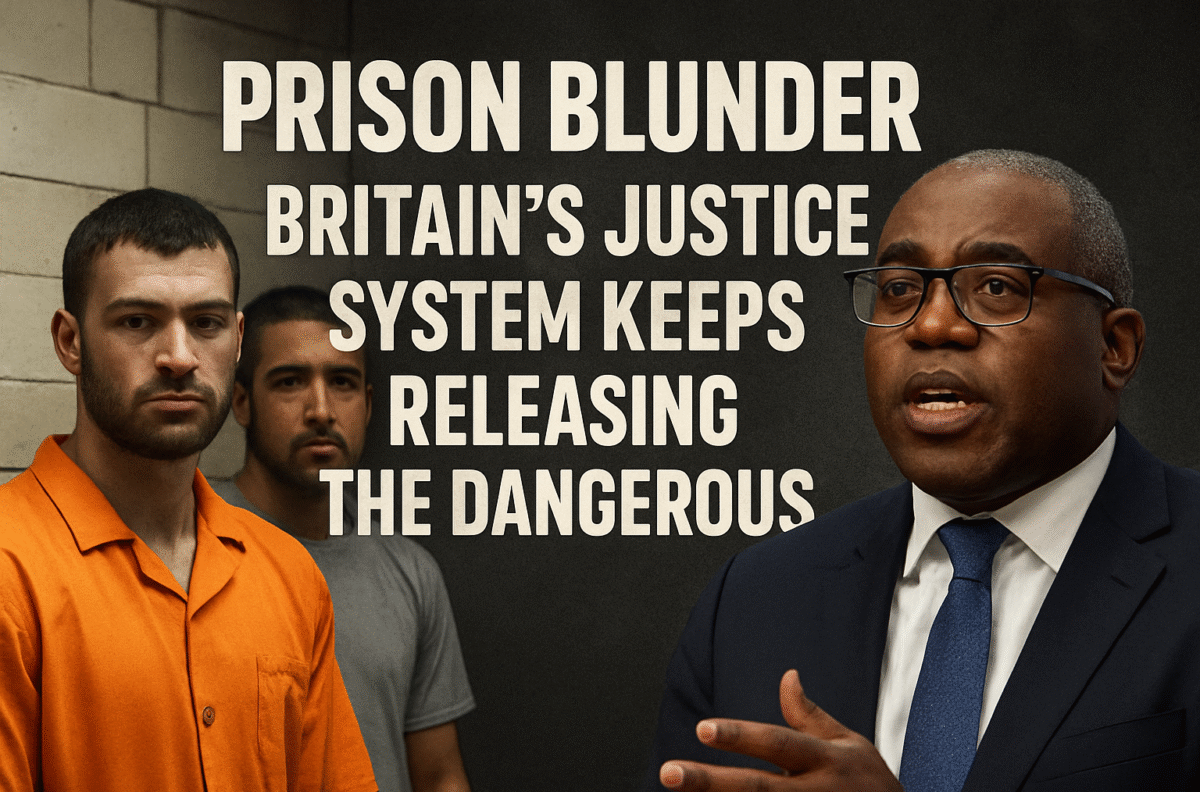Prison blunder exposed: How Britain’s justice system keeps releasing the dangerous — And why it’s getting worse

Britain’s justice
Last week it was revealed that a known migrant sex offender was mistakenly discharged from prison—prompting the David Lammy-led justice ministry to declare that the “strongest release checks ever introduced” were now in place. But merely days later additional cases came to light: two more inmates were released in error.
It’s a moment of acute danger for any government when it fails to control an issue that voters reasonably expect it to manage. In recent years, the most glaring example has been the arrival of migrants via small boats. Rishi Sunak promised to “stop the boats”; Keir Starmer pledged to “smash the gangs” — and yet the problem is still vast.
Now the government finds itself facing yet another crisis: a justice system that is visibly, repeatedly failing at a core task — determining who should be in prison and who should not. And the controls that are meant to prevent accidental releases are clearly not working.
Departmental figures released in July show that 262 prisoners were wrongly released in the year to March — a 128 % jump from the 115 cases recorded in the prior twelve months.
In other words, the problem is both longstanding and worsening. And context matters: this row comes hot on the heels of the accidental release of one of the most high-profile prisoners of the year. That man, Hadush Kebatu—who arrived in the UK in a small boat and was later jailed for sexually assaulting a 14-year-old and a woman while in an asylum hotel in Essex—was inadvertently freed. He has since been deported.
That case brought the issue of accidental prisoner releases into public view with a force it hadn’t had before. Ministers found themselves using the kind of forceful language more common to opposition politicians. For example, Home Secretary Shabana Mahmood dubbed the number of arrivals on small boats “shameful”. And Justice Secretary David Lammy announced he was “absolutely outraged” at the mistaken release last week of Brahim Kaddour‑Cherif—a 24-year-old Algerian sex offender who was being hunted after his release from HMP Wandsworth. He added that his team had been working “through the night” to return the man to custody.
Yet the incident also exposed the hazy origins of the problem. During Prime Minister’s Questions, with the Prime Minister away at a climate summit, the Conservatives’ shadow defence secretary, James Cartlidge, repeatedly asked whether an “asylum-seeking offender” had been accidentally released. It was clear he was on to something. But Lammy ducked the direct question, despite knowing about the case. Why? Because the facts were more complicated—Kaddour-Cherif was not an asylum seeker but someone whose visa had expired after arriving legally. The Justice Secretary admitted he wasn’t certain when he entered the Chamber.
Setting out what he knew might also have exposed what he didn’t. Government sources say “it is incredibly important to know the facts”, and they argue the police had to lead on public disclosure. But critics say Lammy should have known more when he walked into the Commons and should have disclosed more when asked. The Conservatives later joined calls for him to return to the House of Commons to explain what he knew. Former Tory leader Iain Duncan Smith suggested Lammy may have misled Parliament; both the Liberal Democrats and Reform UK have been highly critical too. Some say Lammy’s aggressive tone—shouting “get a grip, man!” at Cartlidge—was a mistake. Maybe he should have set out the facts from the start.
But the bigger picture is what really counts: the justice system is repeatedly failing at its simplest task. The causes are complex—challenging questions for the courts, the prison service, the ministry, and the Home Office. The problem isn’t new, but it’s growing—and the government doesn’t appear to have firm control. For a Justice Secretary, that is a serious problem.
FAQs
Q: How many prisoners were released by mistake in the year to March?
A: 262, representing a 128 % increase from the 115 released in the prior twelve months.
Q: Who is the high-profile offender whose release triggered attention?
A: The case of Hadush Kebatu, who arrived via a small boat and had been convicted of sexual assaults in Essex.
Q: Which prison is at the centre of the most recent releases?
A: HMP Wandsworth, in south-west London.
Q: Was Brahim Kaddour-Cherif an asylum seeker when released?
A: No — he had arrived legally, overstayed his visa, and his offence was trespass with intent to steal (though he had prior offending).
Q: What is the government doing in response?
A: The Ministry of Justice has promised revamped checking systems, a “crack team” of tech experts to digitise release procedures, and greater scrutiny of prison release protocols.
Q: Why is this issue politically significant?
A: Because it touches on fundamental public expectations of safety and state control; when a core state function like keeping dangerous offenders in custody fails, it undermines confidence in government.

